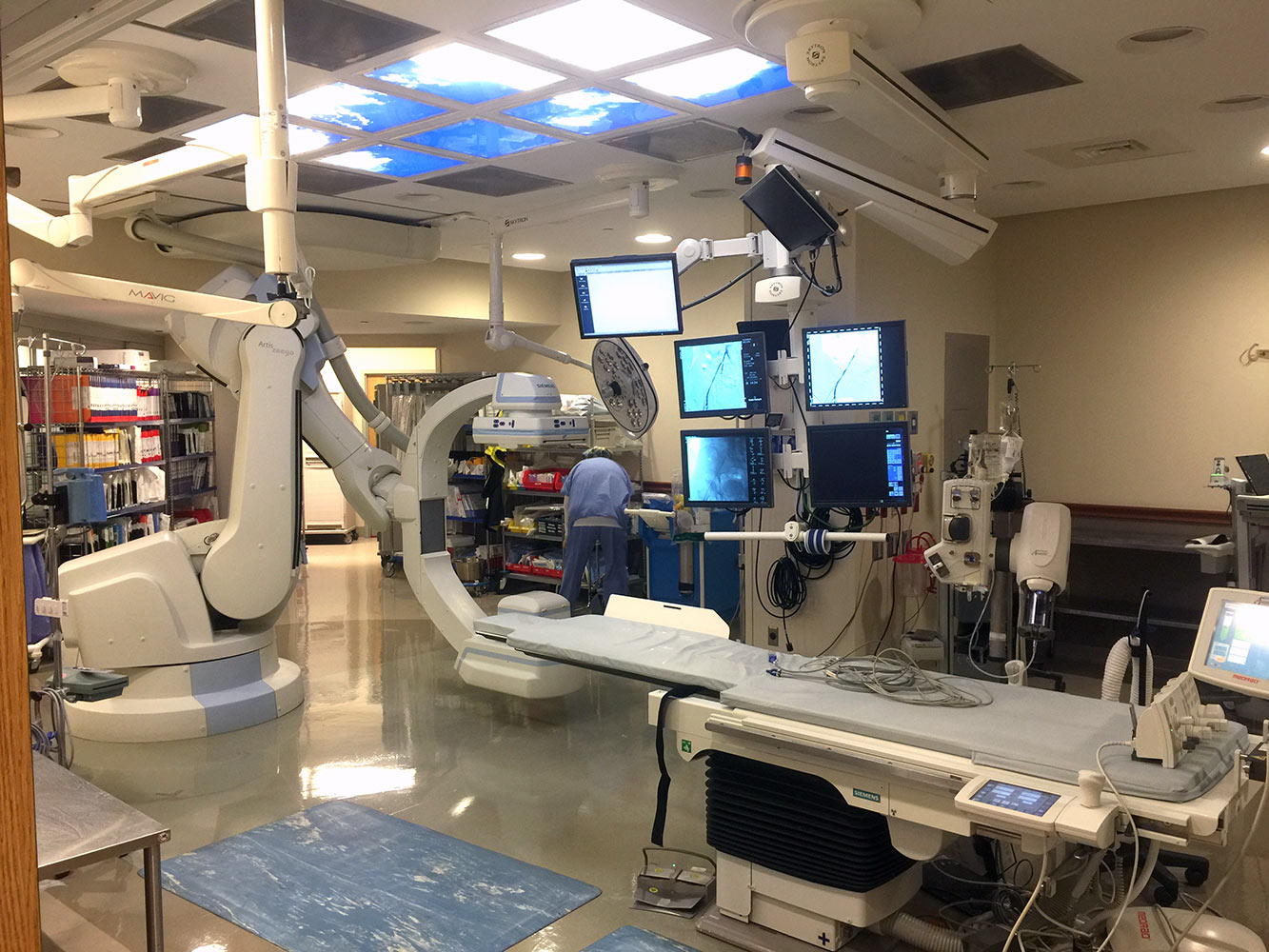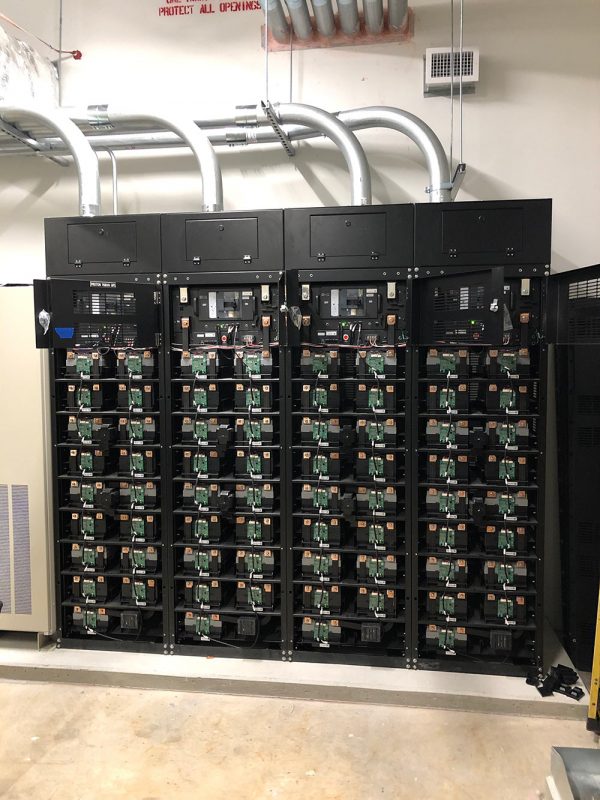More Than 40 Years of Power Quality Expertise and Application Knowledge
CPN Power offers individual UPS systems at a lower cost than medical equipment vendors and Central UPS systems that can support anywhere from 2 suites up to 30 suites, thereby offering dramatic cost savings, reduced floor space, improved equipment operation, fewer service calls, improved patient scheduling, and increased revenue.
the starting point for all projects
Discovery
- Understanding the project scope, and requirements
- Gathering information on the imaging modalities requiring protection
- Looking ahead to future additional modalities and/or equipment upgrades
- Learning about the electrical distribution, panel and breaker amperage, location of distribution switchgear, panels, and breakers
- Space availability to locate a UPS System
Planning involves collecting all of the information discussed during the Discovery Phase of the project.
- Review electrical riser diagrams
- Study floorplans
- Walk the space to verify the information and drawings are correct
- Determining the best location for the UPS System
- Consider cooling requirements for the imaging suites, MRI or other modality chillers, UPS room cooling
- Review the emergency generator sizing and the impact of the UPS and various modalities being protected will have on the emergency distribution.
- Is a new ATS required or can existing ATS support the new UPS System. Can the generator support the UPS System.
Assisting with the Discovery and Planning Phases of Your Project
In some cases, the hospital might hire CPN Power to visit an existing site and assist in gathering the initial information. CPN Power has provided drawing sets of existing distribution along with the planned changes to that distribution. CPN Power would also incorporate layout drawing displaying the location of the electrical distribution switchgear, panels, and UPS location for better clarity of the project scope. The CPN Power initial drawing set might then be shared with the MEP design team.
The conversation points to an existing site with existing imaging modalities and electrical distribution. The project might be a new hospital, an addition to the hospital, an MOB, or a new Outpatient Center, Women’s Health Center, or Imaging Center. In this case, the conversation might take place with the MEP Engineer, or sometimes the Architect to develop the planning and design.
Design
The design phase typically consists of hiring an Architect to develop the Pre-Design for an existing or new facility. A MEP Engineer would be brought onto the project in short order.

New facility design might require many additional specialty firms, such as:
- Civil Engineer
- Structural Engineer
- Medical Equipment Planner
- Interior Design
- Low Voltage Engineer
- Life Safety Engineer
- Acoustical Engineer

Additional items reviewed include:
- One-line power diagrams
- Low voltage wiring
- Heat rejection
- Physical space
- Code requirements
- Support for peripheral equipment
- IFC 1206 or NFPA 855 requirements
- Anchoring
- Monitoring
- Weight distribution
- UPS room temperature specs
- And much more
Generate Submittals & Order Product
Once a purchase order has been placed by the Electrical Contractor or the Customer, CPN Power will generate detailed submittal documents for review by the MEP consulting engineer or by the Customer (when an MEP is not involved with the project). Once the submittals are accepted, then the equipment is ordered from the manufacturers and delivery dates are provided.
Logistics
The next step in the process is to follow up on the equipment delivery and keep the customer informed of any changes. Verify equipment ship dates and provide pro numbers (tracking numbers). Assure that the freight carrier(s) call 24 or 48 hours prior to delivery.
Most important, make sure that no damage is present upon delivery and to note any damage on the freight carrier paperwork. When damage is present, then pictures are worth a thousand words along with an immediate call to CPN Power to note the damage.
Installation
Once the equipment is delivered to the rigger or directly to the jobsite, the Electrical Contractor and Construction Manager complete installation of the UPS System.In addition to the UPS System installation being completed, the air conditioning system(s), ATS, and Generator must be operational and tested prior to the UPS Startup and Commissioning.
NOTE: Anytime batteries are part of the UPS System on a large projects with a long timeline, then it is important to recharge the batteries no more than 6 months from the ship date. Time periods may vary for recharge. So, it is important to know the details to avoid impacting the battery warranty.
Installation includes:
- Equipment placement into the final location
- Equipment anchoring
- Power and low voltage wiring
- Communication wiring for remote monitoring of status and alarm conditions.
Once the installation is completed, equipment startup is required by the manufacturer before providing power or operating the UPS System. This is typically a day process for a single module UPS System. More time may be required for a parallel UPS System or a larger system with many battery cabinets.
Flywheels may require additional time to pull down a vacuum on the chamber prior to use or commissioning. Some installations only require startup services. Startup provides the base level of services to assure proper operation of the UPS System.
Some MEP Engineers or Customers require a higher level of testing to assure proper operation of the UPS module along with other equipment associated with the UPS installation (AC units, ATS, and Generator).
Commissioning
Commissioning services provides that additional level by operating the equipment in the final distribution with:
- Load Banks
- Power quality meters
- Voltage and Current meters
- Infrared Camera
Basic system information is detailed along with operation at various power levels to verify voltage and current harmonics, ground currents, and efficiency of the system. Additional tests are performed under load to verify proper system operation during EPO test, fault test, bypass transfer test, step load tests, emergency power operation, remote monitoring verification, and extended full load testing. These are typical tests performed. Additional tests may be required.
Services
Once the UPS System has been completely tested, the imaging equipment will be added or moved to the UPS output distribution to complete the installation. This is a good time to request Preventative Maintenance Service Pricing that can be added to the budget. It is important to maintain the UPS System annually (sometimes semi-annually) to assure proper operation of the UPS System and to assure a high level of reliability.
In the end, the UPS is installed to be more reliable than utility power, to provide conditioned power to the imaging modalities, and to provide outage protection on normal power or to bridge the outage gap when fed from an ATS and Generator.
Request A Brochure
CPN Power is a nationally recognized company that designs and applies Central UPS and power conditioners for Multi-Modality and Multi-Vendor medical equipment applications.
We invite you to contact us for detailed information, to request a brochure, or to review an application.


